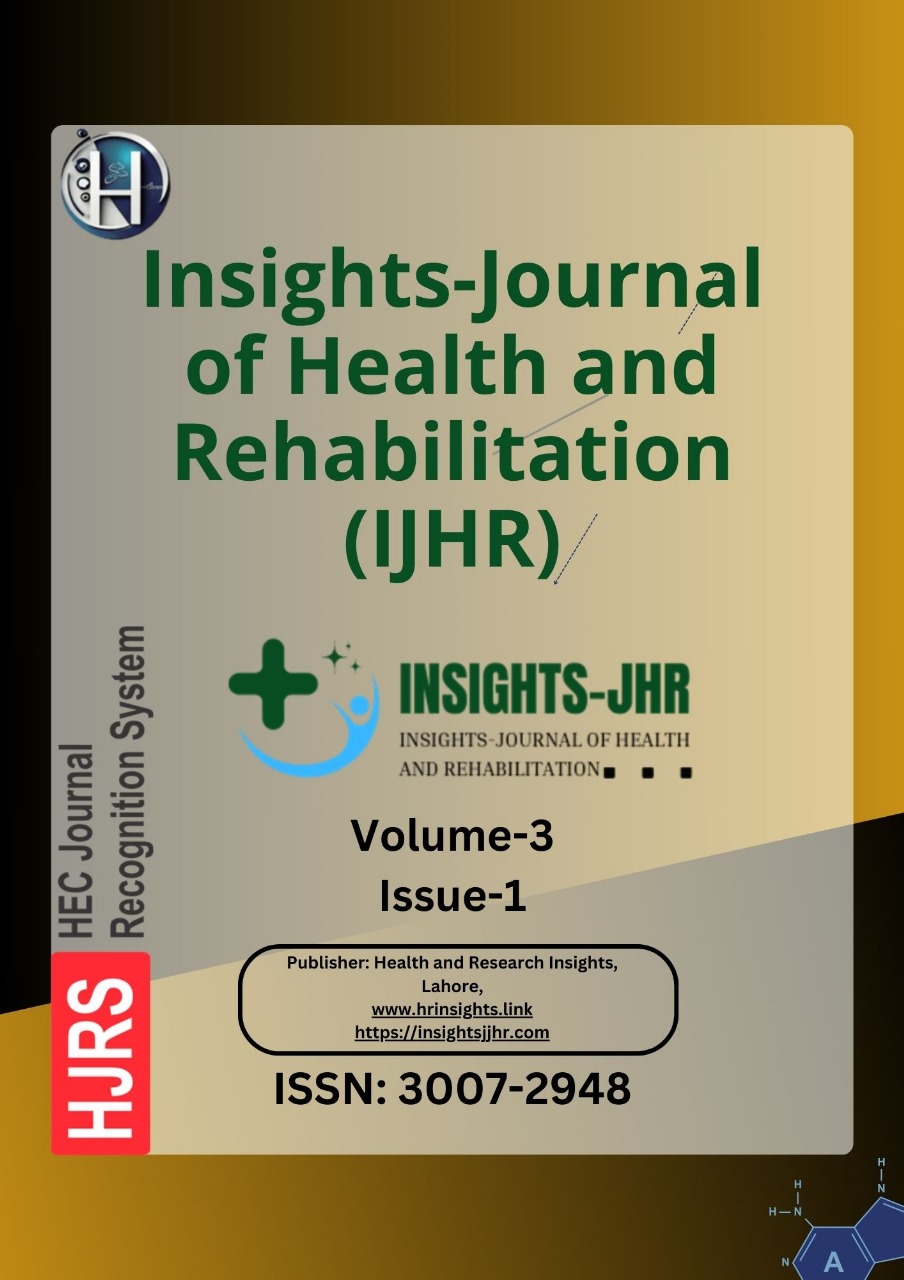FREQUENCY OF HYPOTHYROIDISM IN BETA THALASSEMIA MAJOR CHILDREN
DOI:
https://doi.org/10.71000/1wm8nt06Keywords:
Beta-thalassemia major, Chelation therapy, Endocrine dysfunction, Hypothyroidism, Iron overload, Subclinical hypothyroidism, Thyroid screeningAbstract
Background: Beta-thalassemia major is a common inherited hemoglobinopathy characterized by chronic hemolysis and the need for lifelong blood transfusions. While transfusions improve survival, they lead to excessive iron deposition in various organs, including endocrine glands. Iron overload is a major contributor to endocrine dysfunctions, including hypothyroidism, which can significantly affect growth and development. Early detection of thyroid dysfunction in thalassemia patients is essential, as thyroxine therapy is cost-effective, readily available, and can prevent associated morbidity.
Objective: To determine the frequency of hypothyroidism in children with beta-thalassemia major receiving regular blood transfusions.
Methods: This cross-sectional study was conducted over six months, from January 2024 to June 2024, in the Thalassemia Ward of the Pediatrics Department at Liaquat University Hospital, Hyderabad. A total of 97 children aged 2-15 years with beta-thalassemia major, who had been receiving regular blood transfusions for more than two years, were included using a non-probability consecutive sampling technique. Newly diagnosed cases, children with thalassemia minor or intermedia, those previously on thyroxine therapy, and those with other endocrine or syndromic conditions were excluded. Thyroid function was assessed using serum TSH and T4 levels measured by the ELISA technique. Data were analyzed using SPSS version 20.0, with quantitative variables expressed as mean ± SD and qualitative variables as frequencies and percentages.
Results: The mean age of participants was 8.48 ± 2.93 years, and the mean age at diagnosis was 14.25 ± 12.20 months. The average serum TSH was 2.83 ± 1.64, T4 was 8.42 ± 2.15, and serum ferritin was 5002.44 ± 2937.2 ng/ml. Hypothyroidism was detected in 7.22% (7/97) of patients, all of whom exhibited subclinical hypothyroidism. There was no statistically significant correlation between hypothyroidism and gender (p=0.244), weight (p=0.440), or height (p=0.696).
Conclusion: Hypothyroidism is a notable endocrine complication in children with beta-thalassemia major, with subclinical hypothyroidism being the predominant form. Routine thyroid function screening is crucial to facilitate early detection and timely intervention, preventing long-term complications.
Downloads
Published
Issue
Section
License
Copyright (c) 2025 Fara Anwar, Shazia Memon, Ayesha Almas, Kausar Keerio, Fiza Shah, Fatima Anwar (Author)

This work is licensed under a Creative Commons Attribution-NonCommercial-NoDerivatives 4.0 International License.







